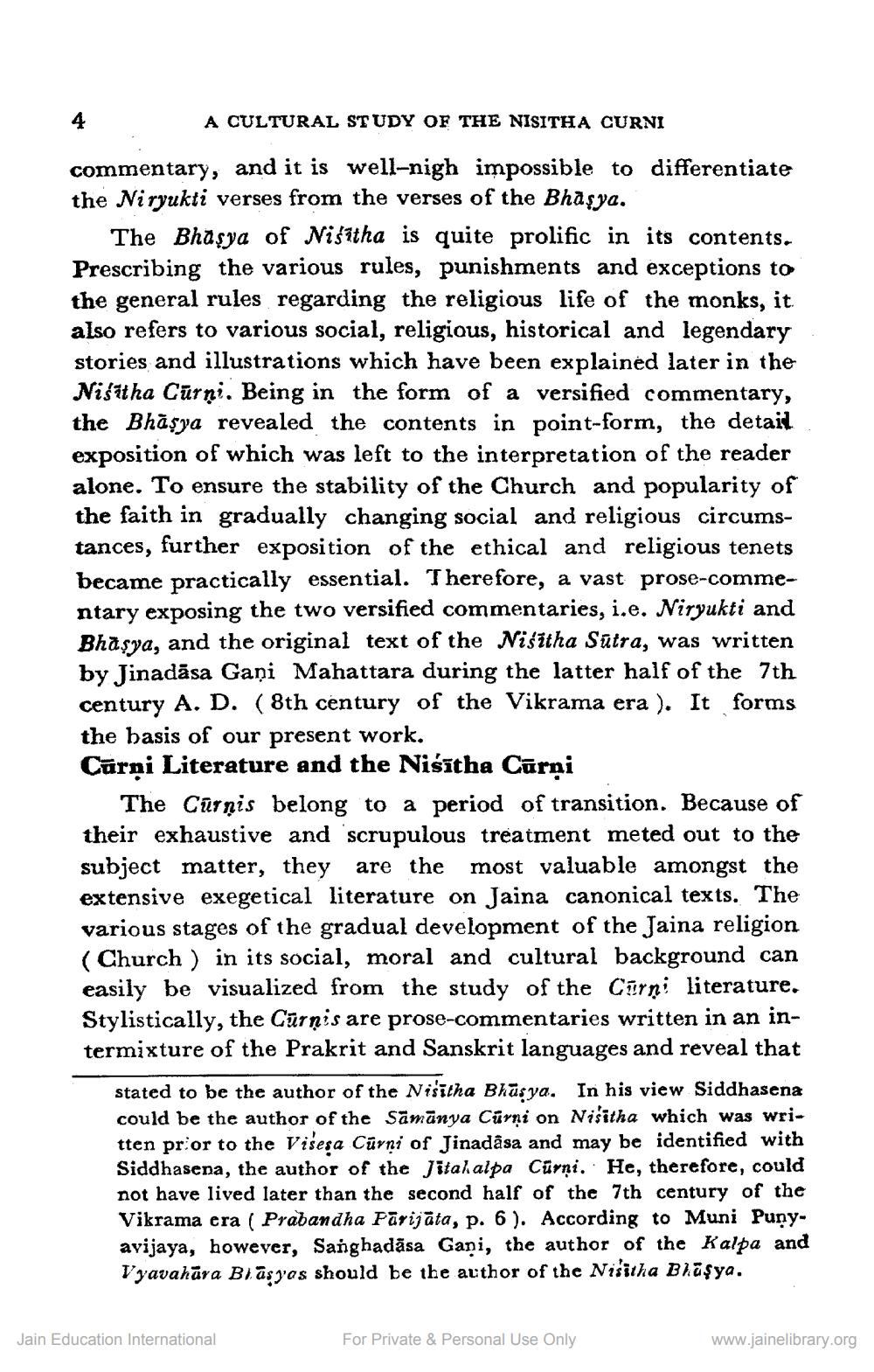________________
A CULTURAL STUDY OF THE NISITHA CURNI
commentary, and it is well-nigh impossible to differentiate the Niryukti verses from the verses of the Bhasya.
The Bhasya of Nisitha is quite prolific in its contents. Prescribing the various rules, punishments and exceptions to the general rules regarding the religious life of the monks, it also refers to various social, religious, historical and legendary stories and illustrations which have been explained later in the Nistha Curni. Being in the form of a versified commentary, the Bhasya revealed the contents in point-form, the detail exposition of which was left to the interpretation of the reader alone. To ensure the stability of the Church and popularity of the faith in gradually changing social and religious circumstances, further exposition of the ethical and religious tenets became practically essential. Therefore, a vast prose-commentary exposing the two versified commentaries, i.e. Niryukti and Bhasya, and the original text of the Nisitha Sutra, was written by Jinadasa Gani Mahattara during the latter half of the 7th century A. D. (8th century of the Vikrama era). It forms the basis of our present work.
Cūrṇi Literature and the Niśītha Cūrṇi
The Curnis belong to a period of transition. Because of their exhaustive and scrupulous treatment meted out to the subject matter, they are the most valuable amongst the extensive exegetical literature on Jaina canonical texts. The various stages of the gradual development of the Jaina religion (Church) in its social, moral and cultural background can easily be visualized from the study of the Curņi literature. Stylistically, the Curnis are prose-commentaries written in an intermixture of the Prakrit and Sanskrit languages and reveal that
stated to be the author of the Nisitha Bhasya. In his view Siddhasena could be the author of the Samanya Cürni on Nisitha which was written prior to the Visesa Curni of Jinadasa and may be identified with Siddhasena, the author of the Jitakalpa Cürni. He, therefore, could not have lived later than the second half of the 7th century of the Vikrama era (Prabandha Fārijāta, p. 6). According to Muni Punyavijaya, however, Sanghadasa Gani, the author of the Kalpa and Vyavahara Bhasyas should be the author of the Nisitha Bhasya.
Jain Education International
For Private & Personal Use Only
www.jainelibrary.org




